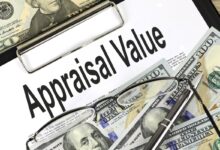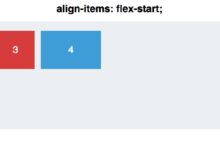commercial real estate value based on rental income: 7 Powerful Insights You Must Know
Ever wonder how investors determine the true worth of a commercial building? It’s not just about square footage or location—it’s all about the cash flow. Discover how commercial real estate value based on rental income drives smart investment decisions.
Understanding the Core Concept: What Determines Commercial Real Estate Value?

At the heart of every commercial real estate valuation lies a fundamental principle: income generation. Unlike residential properties, which are often valued based on comparable sales, commercial properties are primarily assessed by their ability to produce consistent rental income. This approach transforms real estate from a static asset into a dynamic income-generating machine.
The Income Capitalization Approach Explained
The most widely used method to determine commercial real estate value based on rental income is the income capitalization approach. This method converts expected future income into a present value estimate. In simple terms, it answers the question: “How much is this property worth today based on the income it will generate over time?”
- Net Operating Income (NOI) is the starting point.
- A capitalization rate (cap rate) is applied to the NOI.
- The formula: Property Value = NOI / Cap Rate.
This model assumes that the property will continue to operate as it has in the recent past, making historical performance a strong predictor of future returns.
commercial real estate value based on rental income – Commercial real estate value based on rental income menjadi aspek penting yang dibahas di sini.
Why Rental Income Trumps Other Valuation Methods
While cost and comparable sales approaches have their place, the income approach reigns supreme in commercial real estate. Why? Because investors are buying future cash flow, not just bricks and mortar. A building in a less glamorous area with strong, reliable tenants can be more valuable than a flashy property with high vacancy rates.
“In commercial real estate, the rent check doesn’t lie. It’s the ultimate measure of value.” — Real Estate Investment Analyst, Urban Capital Partners
This focus on income allows investors to compare vastly different property types—office buildings, retail centers, industrial warehouses—on a level financial playing field.
commercial real estate value based on rental income: Key Factors That Influence It
While the basic formula seems straightforward, multiple variables affect both the income stream and the cap rate, ultimately shaping the final valuation. Understanding these factors is crucial for accurate assessments.
Net Operating Income (NOI): The Foundation of Value
NOI is calculated as total rental income minus operating expenses (but not mortgage payments). It’s the pure profit generated by the property before financing costs. A higher NOI directly increases property value.
commercial real estate value based on rental income – Commercial real estate value based on rental income menjadi aspek penting yang dibahas di sini.
- Rental income includes base rent, percentage rent (in retail), and reimbursements for expenses like CAM (Common Area Maintenance).
- Operating expenses include property taxes, insurance, maintenance, management fees, and utilities.
- Accurate expense tracking is essential—overestimating or underestimating can skew valuation.
For example, a property with $500,000 in annual rental income and $150,000 in operating expenses has an NOI of $350,000. This figure is the cornerstone of any valuation model.
Capitalization Rate (Cap Rate): The Market’s Pulse
The cap rate reflects the rate of return an investor expects based on the property’s risk profile and market conditions. It’s derived from recent sales of similar properties. A lower cap rate indicates higher demand and lower perceived risk, leading to higher valuations.
- Prime locations with stable tenants often have cap rates between 4% and 6%.
- Riskier markets or properties with high vacancy might see cap rates of 8% or higher.
- Cap rates are inversely related to value: as cap rates fall, values rise, and vice versa.
Using the earlier example, a $350,000 NOI with a 7% cap rate yields a property value of $5 million. If the cap rate drops to 5%, the value jumps to $7 million—without any change in income.
Types of Commercial Properties and Their Income Profiles
Different property types generate income in unique ways, affecting how commercial real estate value based on rental income is calculated. Each sector has its own risk-reward dynamics.
commercial real estate value based on rental income – Commercial real estate value based on rental income menjadi aspek penting yang dibahas di sini.
Office Buildings: Stability vs. Flexibility
Office properties are typically leased to businesses under long-term contracts, providing predictable income. However, the rise of remote work has increased vacancy risks in some markets.
- Class A offices in central business districts command premium rents.
- Lease structures may include base rent plus expense reimbursements.
- Value is highly sensitive to tenant creditworthiness and lease expiration dates.
Investors often look at weighted average lease term (WALT) to assess income stability. A longer WALT means less near-term re-leasing risk.
Retail Centers: Foot Traffic and Tenant Mix
Retail properties derive value from consumer traffic and tenant quality. Anchor tenants like grocery stores or pharmacies can significantly boost the value of surrounding spaces.
- Leases may include percentage rent based on sales volume.
- Location is critical—proximity to population centers and visibility matter.
- E-commerce competition has pressured some retail segments, affecting cap rates.
A well-located shopping center with national tenants can achieve cap rates below 5%, reflecting strong demand and low risk.
commercial real estate value based on rental income – Commercial real estate value based on rental income menjadi aspek penting yang dibahas di sini.
Industrial and Warehouse Spaces: The E-Commerce Boom
Driven by the growth of online shopping, industrial properties have become one of the most sought-after asset classes. These spaces generate steady rental income from logistics companies and distributors.
- Leases are often long-term and triple-net (NNN), shifting most expenses to tenants.
- Properties near major transportation hubs command higher rents.
- Automation and last-mile delivery trends are reshaping demand.
According to NAIOP, industrial vacancy rates in the U.S. have remained below 4% in recent years, supporting strong rental growth and high valuations.
How Lease Structures Impact commercial real estate value based on rental income
The type of lease in place can dramatically affect a property’s income stability and, consequently, its market value. Investors scrutinize lease terms as closely as financial statements.
Triple-Net (NNN) Leases: Low Risk, Steady Returns
In a triple-net lease, the tenant pays base rent plus property taxes, insurance, and maintenance. This shifts most operational risks to the tenant, making NNN leases highly attractive to investors.
commercial real estate value based on rental income – Commercial real estate value based on rental income menjadi aspek penting yang dibahas di sini.
- Common in single-tenant retail, such as fast-food chains or pharmacies.
- Long lease terms (10–25 years) provide income certainty.
- Properties with NNN leases often trade at lower cap rates due to reduced risk.
For example, a McDonald’s on a 20-year NNN lease is considered a “bond-like” investment, with predictable cash flow and minimal landlord responsibilities.
Double-Net and Modified Gross Leases: Shared Responsibilities
These leases split expenses between landlord and tenant. In a double-net lease, the tenant pays rent, taxes, and insurance, while the landlord covers maintenance. Modified gross leases vary but typically include base rent plus a portion of operating costs.
- More common in multi-tenant office and retail spaces.
- Landlord retains more control over property condition.
- Income can fluctuate based on expense changes, affecting NOI.
Valuation must account for potential expense increases, which could reduce NOI if rents are fixed.
Full-Service Gross Leases: All-Inclusive but Riskier
In a full-service gross lease, the tenant pays a flat fee that covers rent and all operating expenses. The landlord absorbs any cost overruns, making this structure riskier but potentially more profitable if expenses are managed well.
commercial real estate value based on rental income – Commercial real estate value based on rental income menjadi aspek penting yang dibahas di sini.
- Common in urban office buildings.
- Landlord incentives to operate efficiently to protect NOI.
- Repricing leases can be challenging if operating costs rise faster than market rents.
Investors may apply a higher cap rate to gross-leased properties to account for this risk, lowering the valuation compared to NNN equivalents.
Market Dynamics and External Factors Affecting Valuation
Even with strong rental income, external forces can influence commercial real estate value based on rental income. These macro-level factors are beyond the control of individual property owners but are critical to understanding market trends.
Interest Rates and Financing Costs
When interest rates rise, the cost of borrowing increases, making leveraged investments less attractive. This can lead to higher cap rates and lower property values, even if rental income remains unchanged.
- Higher mortgage payments reduce cash flow for leveraged investors.
- Investors may demand higher returns to offset financing costs.
- Refinancing challenges can impact property performance.
According to the Federal Reserve, a 1% increase in interest rates can reduce commercial real estate values by 10–15%, depending on leverage and property type.
commercial real estate value based on rental income – Commercial real estate value based on rental income menjadi aspek penting yang dibahas di sini.
Economic Cycles and Occupancy Rates
During economic downturns, businesses may downsize or close, leading to higher vacancy rates and rental concessions. This directly impacts NOI and, therefore, property value.
- Recession-resistant sectors (e.g., medical offices, essential retail) hold value better.
- Properties with short lease expirations are more vulnerable.
- Investors often build in vacancy factors when underwriting deals.
For example, during the 2020 pandemic, office occupancy dropped sharply, leading to downward revisions in valuations despite existing lease income.
Location, Zoning, and Urban Development Trends
A property’s location is a key determinant of rental demand. Proximity to transportation, labor pools, and consumer bases enhances value. Zoning laws and city planning decisions can also unlock or restrict development potential.
- Transit-oriented developments (TODs) are gaining favor.
- Suburban industrial parks benefit from last-mile logistics demand.
- Urban revitalization projects can boost nearby property values.
Investors use geographic information systems (GIS) and demographic data to forecast long-term income potential based on neighborhood trends.
commercial real estate value based on rental income – Commercial real estate value based on rental income menjadi aspek penting yang dibahas di sini.
Advanced Valuation Techniques Beyond the Basic Cap Rate
While the cap rate method is foundational, sophisticated investors use more complex models to refine their assessment of commercial real estate value based on rental income.
Discounted Cash Flow (DCF) Analysis
DCF modeling projects income and expenses over a multi-year holding period, then discounts future cash flows back to present value using a required rate of return. This method accounts for changes in rent, occupancy, and expenses over time.
- Allows for rent escalations, lease rollovers, and capital expenditures.
- More accurate for properties undergoing renovation or repositioning.
- Requires detailed assumptions about market conditions and growth rates.
A DCF model might show that a property with below-market rents today could be worth significantly more in five years after lease renewals at higher rates.
Sensitivity Analysis and Scenario Planning
Smart investors don’t rely on single-point estimates. They run best-case, base-case, and worst-case scenarios to understand how changes in key variables affect value.
commercial real estate value based on rental income – Commercial real estate value based on rental income menjadi aspek penting yang dibahas di sini.
- What if vacancy increases by 10%?
- What if operating expenses rise 5% annually?
- How does a 1% cap rate shift impact value?
This stress-testing approach helps investors prepare for uncertainty and avoid overpaying based on optimistic assumptions.
Replacement Cost and Development Feasibility
Even when using income-based models, investors consider what it would cost to build a similar property from scratch. If replacement cost exceeds market value, new supply is unlikely, supporting existing rents. If market value exceeds replacement cost, new construction may flood the market, depressing rents.
- Replacement cost includes land, construction, permits, and financing.
- Development pipelines are monitored to anticipate supply shocks.
- This analysis acts as a long-term check on income-based valuations.
For instance, if a Class A office building trades at $400 per square foot but would cost $450 to rebuild, the market is signaling scarcity and strong demand.
Maximizing commercial real estate value based on rental income: Strategies for Owners
Property owners aren’t passive participants in the valuation process. By actively managing their assets, they can enhance rental income and, consequently, market value.
commercial real estate value based on rental income – Commercial real estate value based on rental income menjadi aspek penting yang dibahas di sini.
Lease Optimization and Tenant Curation
Signing high-quality tenants on long-term leases is one of the most effective ways to boost value. Creditworthy tenants reduce risk and support lower cap rates.
- Offer lease incentives strategically to secure strong tenants.
- Negotiate rent escalations tied to inflation or market benchmarks.
- Maintain a balanced tenant mix to avoid overreliance on one industry.
A well-leased property with national tenants can command a 1–2% lower cap rate than a similar property with local, short-term tenants.
Operational Efficiency and Expense Management
Since NOI is revenue minus expenses, reducing operating costs directly increases value. Energy-efficient upgrades, preventive maintenance, and effective property management can all improve the bottom line.
- LED lighting and smart HVAC systems reduce utility bills.
- Outsourcing non-core functions can lower management costs.
- Regular audits prevent overpayment for services.
A 10% reduction in operating expenses can increase NOI—and property value—by a similar percentage, assuming the cap rate remains constant.
commercial real estate value based on rental income – Commercial real estate value based on rental income menjadi aspek penting yang dibahas di sini.
Value-Add Repositioning and Renovations
Strategic improvements can justify higher rents and attract better tenants. Common value-add strategies include modernizing lobbies, upgrading amenities, or reconfiguring floor plans.
- Renovations should be cost-effective and aligned with market demand.
- Repositioning a property from Class B to Class A can significantly boost rents.
- Investors often use bridge loans to finance short-term improvements.
According to CBRE Research, value-add investments in multifamily and industrial properties have delivered average returns of 8–12% in recent years.
Common Pitfalls and Misconceptions in Income-Based Valuation
Even experienced investors can fall into traps when assessing commercial real estate value based on rental income. Avoiding these errors is key to making sound investment decisions.
Overreliance on Historical Income
Past performance doesn’t guarantee future results. Relying solely on last year’s NOI without considering lease expirations, market shifts, or tenant renewals can lead to overvaluation.
commercial real estate value based on rental income – Commercial real estate value based on rental income menjadi aspek penting yang dibahas di sini.
- Always analyze lease roll schedules.
- Factor in likely rental concessions for renewals.
- Consider tenant retention rates and market comparables.
A property with $500,000 in current NOI but $300,000 in leases expiring next year may be worth far less than a stable $400,000 NOI property.
Ignoring Hidden Expenses and Capital Reserves
Operating expenses aren’t limited to monthly bills. Major repairs, roof replacements, and HVAC upgrades require significant capital. Failing to set aside reserves can erode NOI when these costs hit.
- Industry standard is to reserve $0.10–$0.25 per square foot annually.
- Older buildings require higher reserves.
- Capex reserves should be factored into long-term cash flow models.
Ignoring reserves can make a property appear more profitable than it truly is, leading to overpayment.
Misjudging Market Cap Rates
Using an outdated or inappropriate cap rate can drastically skew valuation. Cap rates vary by property type, location, and market cycle.
commercial real estate value based on rental income – Commercial real estate value based on rental income menjadi aspek penting yang dibahas di sini.
- Always use recent, comparable sales data.
- Adjust for differences in quality, lease term, and condition.
- Consult local market reports from firms like Colliers or JLL.
A 1% error in cap rate can result in a 10–20% valuation error—for example, using a 6% cap rate instead of 7% inflates value by over 16%.
How is commercial real estate value calculated using rental income?
Commercial real estate value based on rental income is typically calculated using the income capitalization approach: divide the property’s Net Operating Income (NOI) by the market capitalization rate (cap rate). For example, a property with $300,000 NOI in a market with a 6% cap rate is valued at $5 million.
What is a good cap rate for commercial real estate?
commercial real estate value based on rental income – Commercial real estate value based on rental income menjadi aspek penting yang dibahas di sini.
A “good” cap rate depends on the property type, location, and risk level. Generally, 4–6% is considered low risk (prime locations), 6–8% is moderate, and 8%+ is higher risk. Lower cap rates mean higher valuations and stronger demand.
Can a property’s value increase without raising rent?
Yes. Value can increase if operating expenses are reduced (boosting NOI), if cap rates compress due to market demand, or if lease terms improve (e.g., longer duration, stronger tenants). Value is a function of both income and perceived risk.
How do interest rates affect commercial real estate valuation?
commercial real estate value based on rental income – Commercial real estate value based on rental income menjadi aspek penting yang dibahas di sini.
Rising interest rates increase borrowing costs, which can lead investors to demand higher returns (higher cap rates), thereby lowering property values. Conversely, low rates support lower cap rates and higher valuations.
What’s the difference between NOI and cash flow?
Net Operating Income (NOI) is income after operating expenses but before financing. Cash flow is NOI minus debt service (mortgage payments). Lenders and appraisers focus on NOI, while investors care about cash flow for returns.
Understanding commercial real estate value based on rental income is essential for investors, owners, and developers. By focusing on net operating income, cap rates, lease structures, and market dynamics, stakeholders can make informed decisions that maximize returns. While the basic formula is simple, the real skill lies in analyzing the nuances—tenant quality, expense management, and future market trends. Whether you’re buying, selling, or managing a property, a deep grasp of income-based valuation empowers smarter, more profitable choices in the ever-evolving world of commercial real estate.
commercial real estate value based on rental income – Commercial real estate value based on rental income menjadi aspek penting yang dibahas di sini.
Further Reading:




